Motorola Droid 3 Review - Third Time's a Charm
by Brian Klug on July 30, 2011 12:01 AM ESTJust like the other Droids, this model’s slider lacks any spring assistance, instead it slides out along a friction-guided two-rail track. It’s pretty obvious where that friction happens and where the slider locks into the display part, given the two small notches at the top, and likewise where the tracks are at the extreme left and right. Initially I found the Droid 3 slider a bit resistive and not super smooth, however after a few days of use it settled into a much better and smoother groove.
It still isn’t quite as fluid as HTC’s latest designs, but again gets the job done with an impressive thickness (or lack thereof). The back of the display is topped with a reflective, patterned surface which also unfortunately collects fingerprints.
So how is the keyboard that the slider makes possible? In a word - amazing. Yes, it quite literally is the closest to perfect I’ve seen in a very long time. Each iteration of Motorola Droid keyboards has gotten slightly better, starting with the almost unusable Droid 1’s concave keys which had minimal feedback, to the mid-cycle refresh which changed key domes to convex, followed up by the Droid 2 which removed the D-pad and improved communication, and now the Droid 3.
The Droid 3 adds a fifth keyboard row, this time dedicated exclusively to the arabic numerals. I originally thought having numerics wouldn’t make much sense, but after entering my 20-character WPA PSK for probably the hundredth time followed by the usual assortment of passwords for email and google accounts, it finally made sense. Having a row dedicated to numerics just makes so much sense in retrospect, both for entering phone numbers in messaging, passwords, and so many other situations.
The numerical row also does double duty by acting as a buffer between the top row of the latin characters and the top display slider. My only major complaint with the Droid 2 and before was that there was very little space between this top row and the display slider - if you had any fingernails at all or even just large fingers, they’d likely collide with that slider when typing on the top row. Now, having one more (even half height) row makes that a solved problem.
The keys on the Droid 2 previously had little space between them, it was primarily one large piece without a discrete gap between characters. The Droid 3 now includes a shiny plastic layer between keys, which will no doubt show lots of grime in due time, but it does make each key independently clicky.
The only rearrangements to speak of are the removal of alt-lock and the back keys, and repositioning of the tab key. The bottom row also is slightly shifted to the left. Material and tactile feel on these new domes are excellent. Again, the keys are convex, topped in a soft matte texture, and communicatively clicky. Motorola takes a nod from Apple with a caps-lock indicator that nicely disappears into the lip on the left next to the shift key - it’s a nice touch which makes the caps lock indicator visible even with a finger on the button.
Backlighting on the Droid 3 keyboard is nice and even. There aren’t any controls in settings for controlling when the backlight comes on or how long until it turns off. Backlighting seems to turn on and remain on when ambient brightness is under a certain level. Alongside the Droid 2, the Droid 3 seems very conservative with its keyboard backlighting, as it seems to enable it at a notably lower ambient light level than its predecessor.
The capacitive buttons are likewise backlit the same way they have been on previous Motorola Droids, and thankfully the order of these respective Android keys are unchanged from the Droid 2 to 3. There’s a bit of capacitive button backlight bleed at the bottom of the display where the glass ends and meets plastic, but it isn’t too distracting.
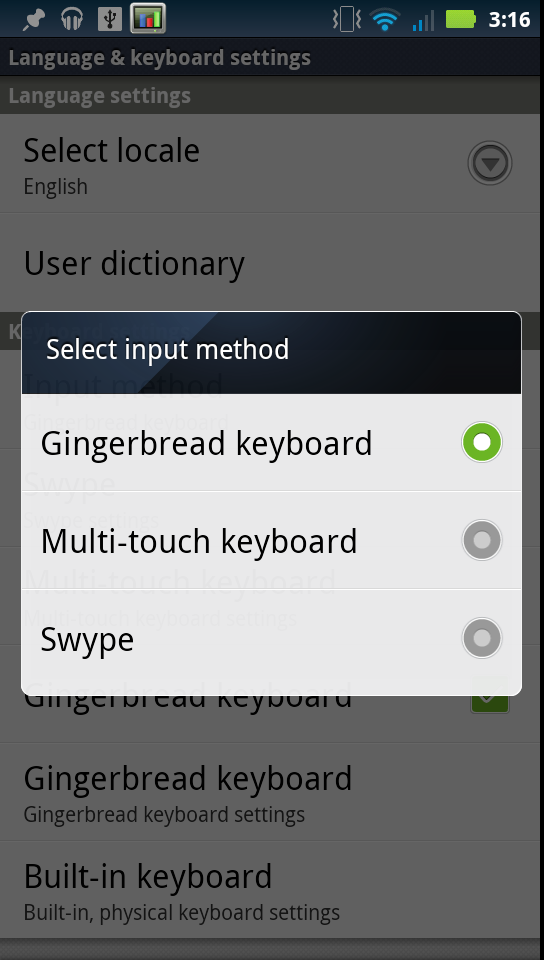
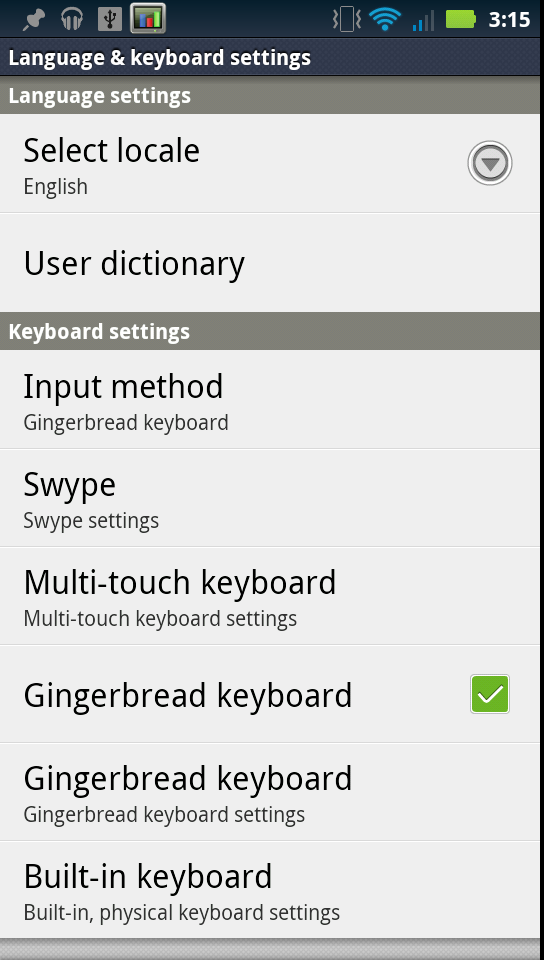
Since we’ve been talking about the keyboard, I think it’s worth mentioning that the Droid 3 continues the Motorola legacy of including a host of software keyboard options for portrait view. Swype, the default Motorola multi-touch keyboard, and the Android 2.3 stock gingerbread keyboard are all preinstalled an available as options. I’m glad the Droid 3 doesn’t do away with the gingerbread keyboard, like I’ve seen other Android 2.3.x handsets do. Swype is themed to look like Motoblur, and the multi-touch keyboard is as good as it always has been on other Motorola Android devices.
The last part is that there’s another pane in the input and keyboards settings page for the hardware keyboard with a few options. What feels neglected is how anemic the hardware keyboard auto-replace engine is. Compared with the gingerbread and even Motorola multi-touch keyboards, the hardware keyboard has an almost non-existant auto-replace engine for fixing misspelled words. In practice, it does little more than correct things like “im” to “I’m,” and so forth. It’d be nice to see the hardware keyboard get a bit more love.


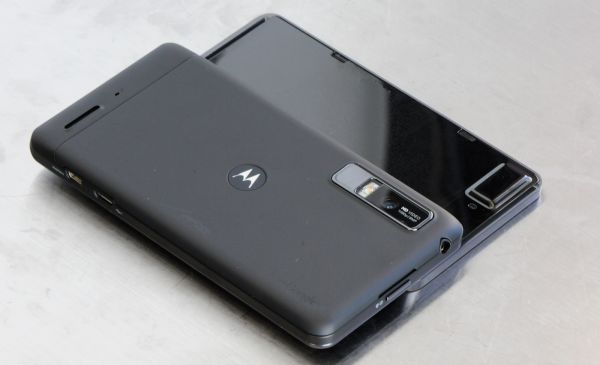
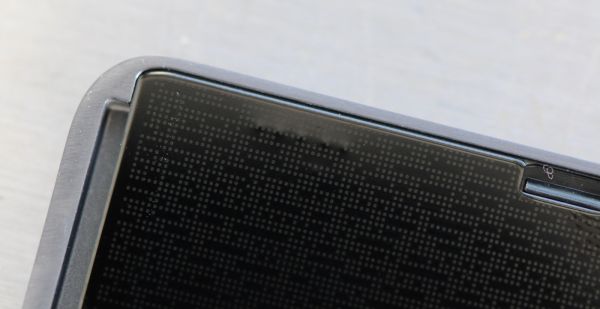
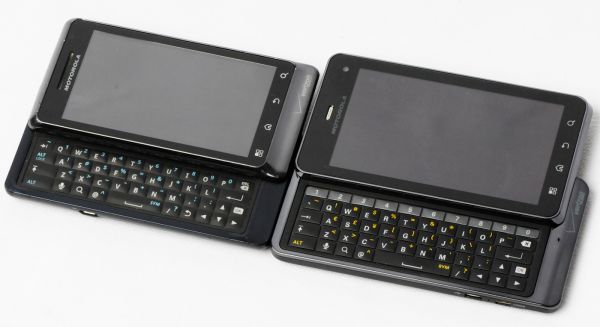
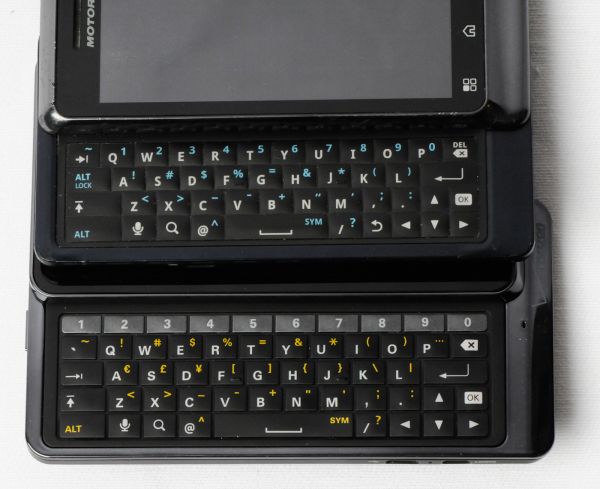
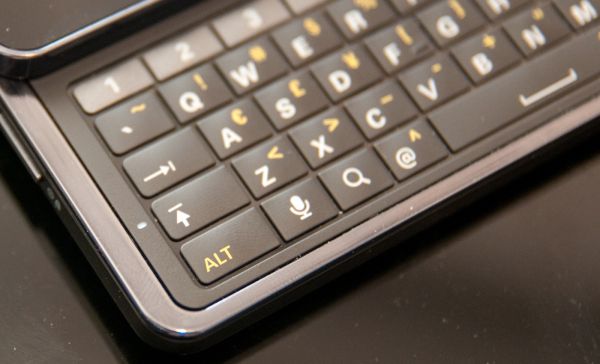

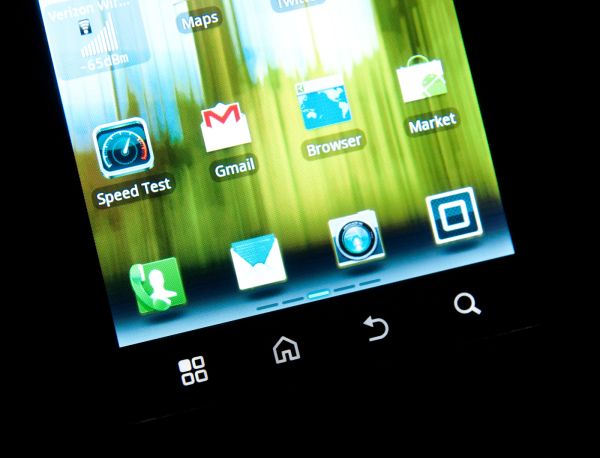














84 Comments
View All Comments
7amood - Saturday, July 30, 2011 - link
that's nice to hearplease don't forget to talk about the screen problem
http://www.gsmarena.com/samsung_galaxy_s_ii_displa...
It's really hard to accept that my perfect SUPER AMOLED is not perfect.
It's harder to accept the fact that samsung don't give a f*** about me since they already have my money.
takumsawsherman - Saturday, July 30, 2011 - link
On the GL benchmark, it shows iPhone 3GS running faster than iPhone 4. Is this correct? If so, why do you think iPhone 4 is performing worse on the test?Ryan Smith - Sunday, July 31, 2011 - link
GLBench runs at the device's native resolution. The iPhone 4 is 4x the resolution of the 3GS.Lucian Armasu - Sunday, July 31, 2011 - link
It looks like OMAP is on the way out from the market, though:http://semiaccurate.com/2011/07/29/texas-instrumen...
Now the fight will be left between Nvidia, Qualcomm and Samsung.
martyrant - Sunday, July 31, 2011 - link
My VP wanted one, so we both got one the same day. I don't talk on the phone as much, but after a week I did a conference call on it and it drained it from 80% to 15% in under an hour. I also just left it on a charger last night, saw it go from 30-90%, went to bed, got up and just checked it (while still plugged into the charger) and it's back at 30%. Did you see any strange anomalies when running your battery life tests? My VP loves the phone, but hates the battery--his dies all the time and so does mine. It seems like while your tests look awesome, the real life performance of this phone is nowhere near in line with those tests when it comes to battery. I have tried max battery saver, just about everything---had to get the VP an extended battery pack and he still doesn't know if he can continue to use this phone because of the battery issues.martyrant - Sunday, July 31, 2011 - link
It went to 20% from 30% while writing that comment, while plugged into the charger. Hot, right?josby - Sunday, July 31, 2011 - link
Same here. I bought mine the day they were released in stores, but I've been anxiously awaiting the AnandTech review of it because I knew it would include battery life comparisons. I came from a T-Mobile G2 (running Cyanogen7) and have all the same apps, with the same update intervals set, on my Droid3 as I had on the G2, yet the battery life is very noticeably worse. It can barely make it from morning til night even with very light usage.In fact, I always left my G2's wifi on, yet the Droid3 still doesn't last as long even if I leave wifi off.
Yet, the G2 does considerably worse than the Droid3 in the battery life tests in this review.
Brian Klug - Sunday, July 31, 2011 - link
That's odd - I wonder what kind of signal environment he was in when he made that call. Could you find out what Rx signal strength was in dBm?The only part of the entire cellular architecture that has a power control loop is the phone->base station, and when you're in a low signal environment the phone can increase Tx power to be "heard" by the base station and thus hurt battery life considerably. We always test in areas with at least -75 dBm or better.
-Brian
photoguru - Monday, August 1, 2011 - link
I had major problems with my battery life until I realised that the power adapter for the Droid 3 requires 5.1v at 850mA which is quite a bit higher than most chargers. Mine actually died while browsing the web and being plugged into a Belkin usb charger.Also, theres an issue with programs not turning off once you exit them. Task killers should fix it but I actually just went through the programs and manually adjusted which ones can continue to run in the background. Now my battery lasts almost twice as long as it did before, and quite a bit longer than my droid 1 and droid 2 global.
anandtech pirate - Sunday, July 31, 2011 - link
how about the Evo3D?